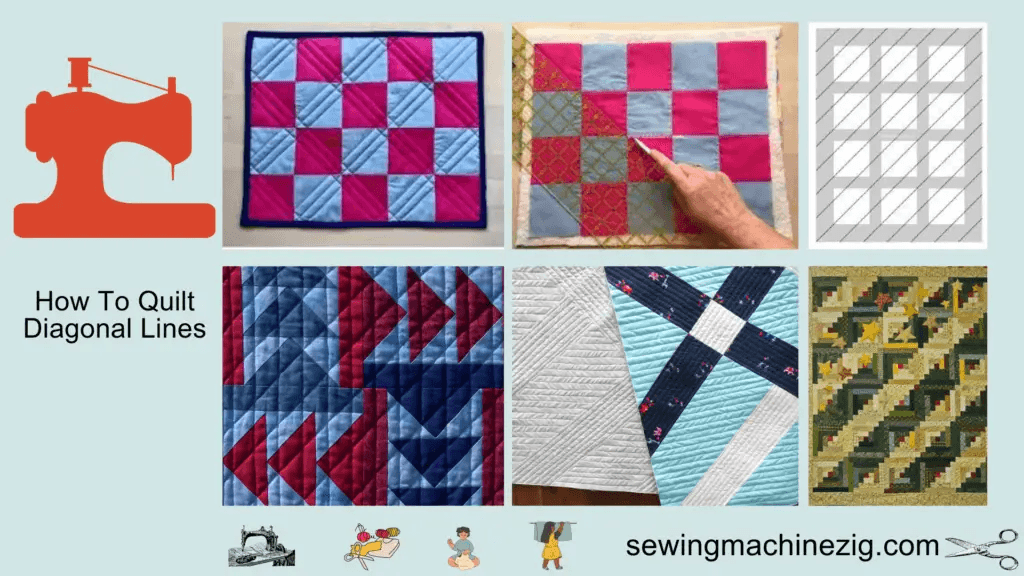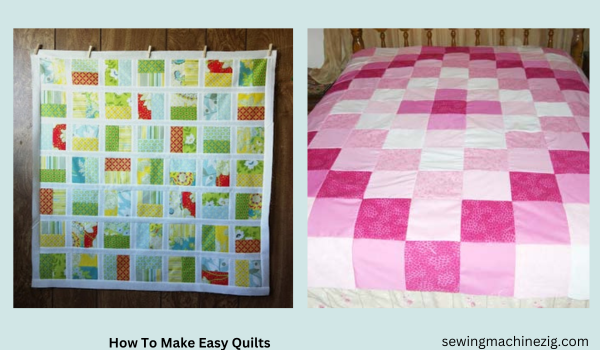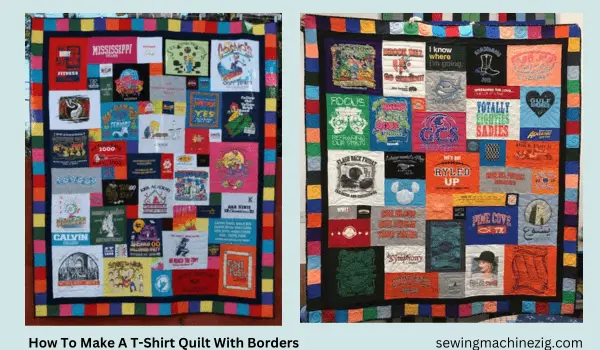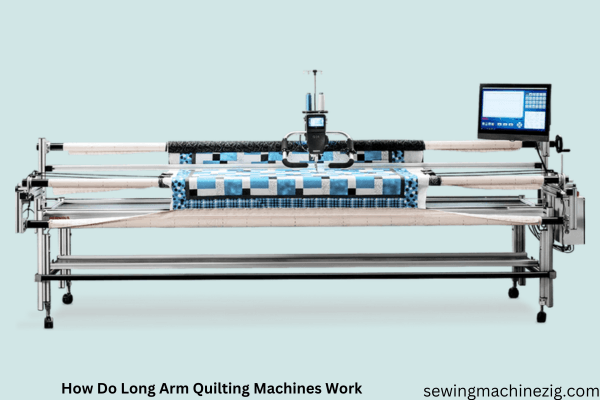
Long arm quilting machines have revolutionized the world of quilting, enabling quilters to efficiently and effectively create intricate and professional-looking quilt designs.
These specialized machines offer a larger throat space and extended reach, allowing quilters to work on larger quilts without the limitations of a traditional sewing machine. But exactly how do long arm quilting machines work?
At their core, long-arm quilting machines consist of a frame, a sewing head, and a set of rollers. The frame provides a sturdy and stable structure for the machine, allowing for smooth and precise movements.
The sewing head, which is mounted on a carriage, holds the needle and the thread. This head is designed to move freely in any direction along the length and width of the frame.
The quilt sandwich, comprised of the quilt top, batting, and backing fabric, is loaded onto the frame and secured using the rollers.
The machine’s rollers are responsible for maintaining tension and keeping the layers of the quilt sandwich taut and wrinkle-free.
As the quilter guides the sewing head across the quilt, the machine’s powerful motor drives the needle up and down, creating the desired stitch patterns.
Long arm quilting machines work by providing a larger throat space and extended reach compared to traditional sewing machines. They consist of a frame, a sewing head, and a set of rollers. Here’s a breakdown of how do long arm quilting machines work:
1. Frame:

The machine’s frame provides a stable structure on which the quilting process takes place. It typically has a rectangular or rectangular-shaped design and is built to support the weight of the quilt sandwich.
2. Sewing Head:
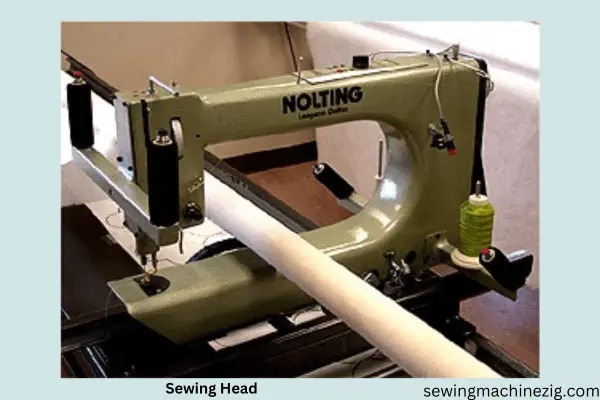
The sewing head is mounted on a carriage that moves freely along the length and width of the frame. It holds the needle and the thread, and its movement is controlled by the quilter.
3. Rollers:
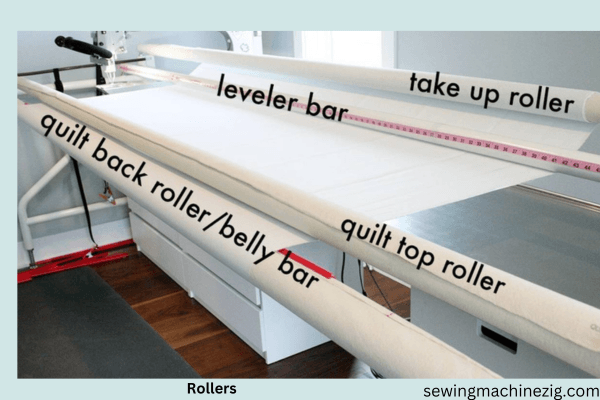
The quilt sandwich, comprising the quilt top, batting, and backing fabric, is loaded onto the frame and secured using rollers. These rollers keep the layers of the quilt sandwich taut and in place during the quilting process.
4. Tensioning System:
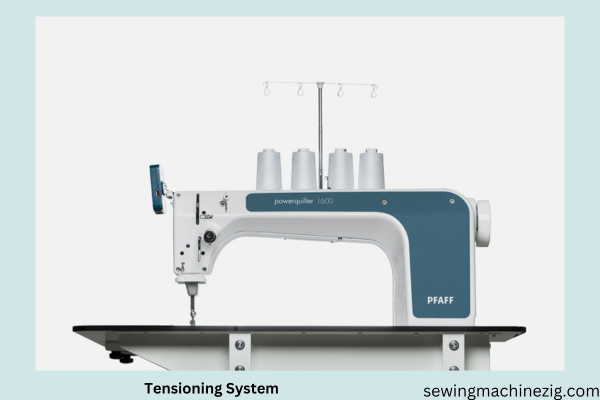
Long arm quilting machines have a tensioning system that ensures proper tension is maintained on the fabric and threads. This system helps prevent loose stitches or puckering of the quilt.
5. Motor And Needle:
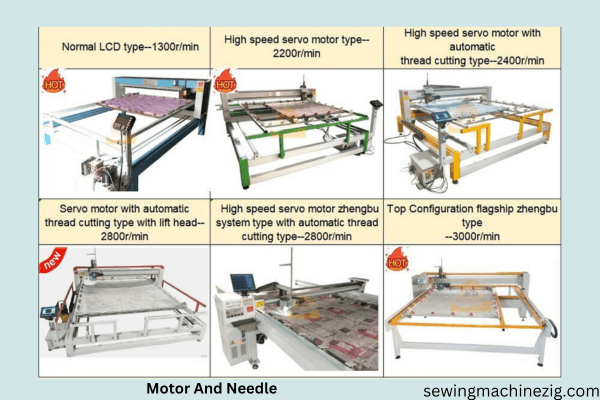
Long arm quilting machines are equipped with a motor that drives the needle up and down. As the quilter guides the sewing head across the quilt, the needle pierces through the layers of fabric and creates the desired stitch patterns.
6. Controls and Features:
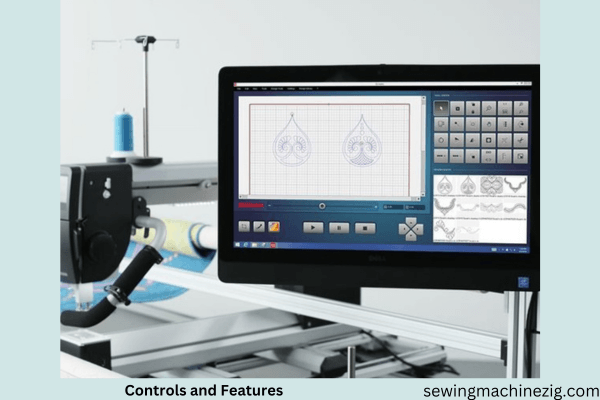
Long arm quilting machines offer various controls and features to enhance the quilting process. They may have adjustable stitch length and speed settings, allowing quilters to customize their stitching.
Some machines even come with computerized systems that offer pre-programmed or digitized designs for automated quilting.
Overall, long arm quilting machines provide quilters with the freedom, space, and capabilities to efficiently create intricate quilt designs.
Their larger workspace and extended reach make it easier to handle larger quilts, now you understand and learn how do long arm quilting machines work and the controlled movement of the sewing head ensures precise stitching throughout the quilting process.
What Is The Purpose Of A Long Arm Quilting Machine
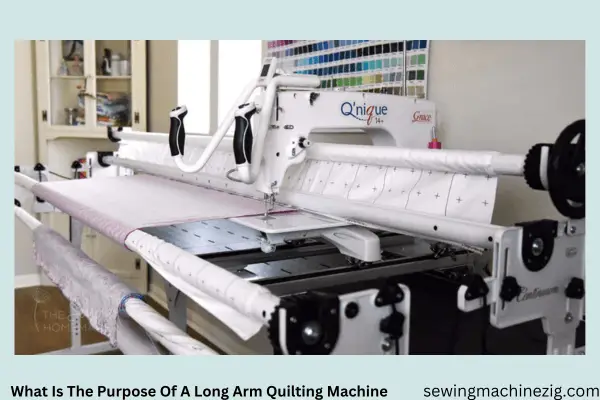
The purpose of a long arm quilting machine is to facilitate the quilting process by providing quilters with a larger workspace, extended reach, and enhanced capabilities compared to traditional sewing machines. Here are some key purposes how do long arm quilting machines work:
1. Quilting Large Projects:
Long arm quilting machines are designed to handle larger quilts that may be challenging to maneuver on a regular sewing machine. The extended throat space and frame allow quilters to work on quilts of various sizes, from lap quilts to king-size bed quilts, without constraints.
2. Quilting Efficiency:
Long arm quilting machines enable quilters to complete their projects more efficiently. The larger working area and freedom of movement provided by the sewing head on the frame allow for faster stitching, reducing the time it takes to quilt a large area.
3. Intricate Quilting Designs:
With the extended reach and maneuverability of the sewing head, long arm quilting machines empower quilters to create intricate and detailed quilting designs. They can easily stitch complex patterns, motifs, and textures that enhance the visual appeal of the quilt.
4. Professional-Quality Results:
Long arm quilting machines produce professional-quality results. The machines offer precise stitch control and consistent tensioning, ensuring even and beautiful stitches throughout the quilt. Quilters can achieve a polished and expertly quilted look that elevates their projects.
5. Versatile Stitching Options:
Long-arm quilting machines come with various features and options to enhance quilting versatility. They may offer adjustable stitch length, speed settings, and different stitch patterns, allowing quilters to experiment and customize their designs based on the desired aesthetic.
6. Customization and Creativity:
Long-arm quilting machines provide quilters with the freedom to explore their creativity and personalize their quilts. Quilters can incorporate unique patterns, free-motion quilting, custom motifs, and even digitized designs to bring their artistic vision to life.
In summary, the purpose of how do long arm quilting machines work is to offer quilters an efficient, versatile, and precise tool for quilting large projects, achieving professional-quality results, and unleashing their creativity through intricate designs and customization options.
How Long Does It Take To Quilt On A Long Arm Machine
The time it takes to quilt on a long-arm machine can vary depending on several factors, including the size and complexity of the quilt, the chosen quilting design, the quilter’s skill level, and the speed at which they work. Here are some considerations regarding the time it may take on how do long arm quilting machines work:
1. Quilt Size:
The size of the quilt plays a significant role in determining the quilting time. Larger quilts naturally require more time to quilt compared to smaller ones. Quilting a lap-sized quilt may take a few hours while quilting a king-size quilt can take several sessions or days to complete.
2. Quilting Design:
The complexity of the chosen quilting design affects the time required for quilting. Simple designs, such as straight-line or meandering quilting, can be completed relatively quickly.
On the other hand, intricate custom designs or dense quilting patterns may require more time and attention to detail.
3. Quilter’s Skill Level:
Experience and skill in operating a long arm quilting machine also influence the quilting time. Seasoned quilters who are familiar with the machine’s functions and have honed their quilting techniques may complete projects more efficiently than beginners who are still learning and adapting to the process.
4. Quilting Speed:
Each quilter has their own comfortable quilting speed. Some quilters prefer a faster pace, while others work at a slower, more deliberate speed. Quilting speed can impact the overall time it takes to complete a quilt.
It is important to note that estimating the exact time for quilting on a long arm machine can be challenging due to the individual and project-specific variables involved.
Long Arm Quilting Machines Features
Long-arm quilting machines offer various features and capabilities to enhance quilting precision.how do long arm quilting machines work some machines come equipped with computerized systems that allow for automated stitching designs, while others rely on manual controls and the quilter’s skill.
These machines often offer adjustable stitch length and speed settings, ensuring versatility to accommodate different quilting techniques and fabric types.
By utilizing long-arm quilting machines, quilters can achieve professional-quality results with ease.
The freedom of movement and enhanced capabilities of these machines make it possible to create intricate quilting patterns, decorative motifs, and beautiful textures, turning a simple quilt into a work of art.
Whether you’re a professional quilter or an avid quilting enthusiast, long-arm quilting machines provide an efficient and effective tool to bring your creative visions to life.
Conclusion:
Long arm quilting machines offer quilters a versatile and efficient tool for quilting projects of various sizes and complexity. These machines provide a larger working area, extended reach, and enhanced maneuverability through the sewing head mounted on a frame.
By securing the quilt sandwich on rollers, maintaining tension, and utilizing a powerful motor, long-arm quilting machines enable quilters to stitch intricate designs, achieve professional-quality results, and unleash their creativity. With adjustable settings and customization options, these machines offer a range of stitching possibilities.
Whether quilting large projects or focusing on intricate details, Hope now you learn more about how do long arm quilting machines work and understand its feature and purpose. Long-arm quilting machines streamline the quilting process and help quilters bring their creative visions to life with precision and efficiency. I hope after reading and following this guide you’re aware of how do long arm quilting machines work.
FAQs:
Q 1: How Does A Long Arm Quilting Machine Differ From A Regular Sewing Machine?
A: Long arm quilting machines have a larger throat space and extended reach, allowing quilters to work on larger quilts without the limitations of a regular sewing machine. They also feature a frame, a sewing head mounted on a carriage, and rollers to secure and tension the quilt sandwich.
Q 2: What Is The Purpose Of The Frame In A Long Arm Quilting Machine?
A: The frame provides stability and support for the quilting process. It holds the quilt sandwich in place, allowing the sewing head to move freely along the length and width of the frame.
Q 3: How Does The Sewing Head Move On A Long Arm Quilting Machine?
A: The sewing head is mounted on a carriage, which is designed to move smoothly and effortlessly on the frame. Quilters guide the sewing head across the quilt, controlling its direction and stitching.
Q 4: What Is The Role Of The Rollers In A Long Arm Quilting Machine?
A: The rollers secure and tension the quilt sandwich on the frame. They help keep the layers taut and wrinkle-free during the quilting process, ensuring smooth stitching and preventing fabric distortion.
Q 5: How Is The Quilting Accomplished On A Long Arm Quilting Machine?
A: As the quilter guides the sewing head across the quilt, the machine’s motor drives the needle up and down, creating the desired stitch patterns. The quilter controls the speed and movement, allowing for precise and even quilting.
Q 6: Can Long Arm Quilting Machines Create Different Stitch Patterns?
A: Yes, long-arm quilting machines offer various stitch patterns and designs. Some machines have built-in stitch designs, while others allow for free-motion quilting, giving quilters the freedom to create custom patterns and textures.
Q 7: Are Long Arm Quilting Machines Suitable For Beginners?
A: Long-arm quilting machines can be used by beginners, but they may have a steeper learning curve compared to regular sewing machines. Practice and familiarity with the machine’s controls and movement are essential to achieve the desired quilting results.

